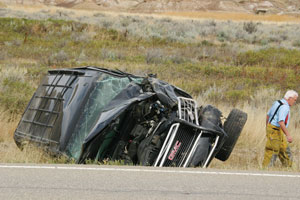
The teeth and stomach contents of two exceptionally well-preserved fossils from Alberta answer questions about the evolutionary success of mosasaurs, an extinct group of giant, flipper-equipped (or flipper-bearing) marine lizards that dominated the waters 90 – 65 million years ago.
A team of researchers, led by Dr. Takuya Konishi and Dr. Donald Brinkman of the Royal Tyrrell Museum of Palaeontology studied two of the world’s best-preserved 74-million-year-old Prognathodon specimens found in Southern Alberta.
They were able to determine what the entire animal looked like for the first time, and what the little known predator ate. The preserved gut contents revealed the remains of a large fish, a sea turtle with a shell 60 cm in diameter, and a possible ammonite jaw.
“Macroscopically, the teeth of Prognathodon are blunt-ended and robust, a shape suited for crunching. Microscopically, most of the teeth were equipped with cutting edges, useful for slicing meat. It’s this combination that enabled these predators to handle both hard and soft prey; they could eat nearly anything that swam in the ocean,” Konishi explains.
For over a century, scientists did not have enough fossil evidence to confirm what Prognathodon, a particularly large-headed mosasaur, looked like in life. “Between the two specimens, we now know it had a slender skeleton, similar to other mosasaurs, but a bigger skull,” states Konishi. “This suggests that evolution in mosasaurs involved modifications to their head first, followed by the rest of their body.” This was probably advantageous for all mosasaurs as they could share the same environment with reduced competition for the same kind of food source, which may have maintained, or even increased, an overall diversity of mosasaurs.
The later part of mosasaur evolution is characterized by an increased tooth variation among different mosasaurs. Their overall diversity continued until they became extinct at the end of the Cretaceous Period, about 65 million years ago.
The findings from the study are published in the September 2011 edition of the Journal of Vertebrate Paleontology.



















